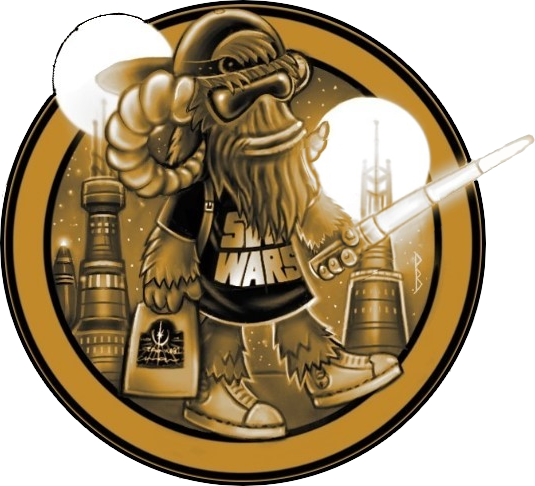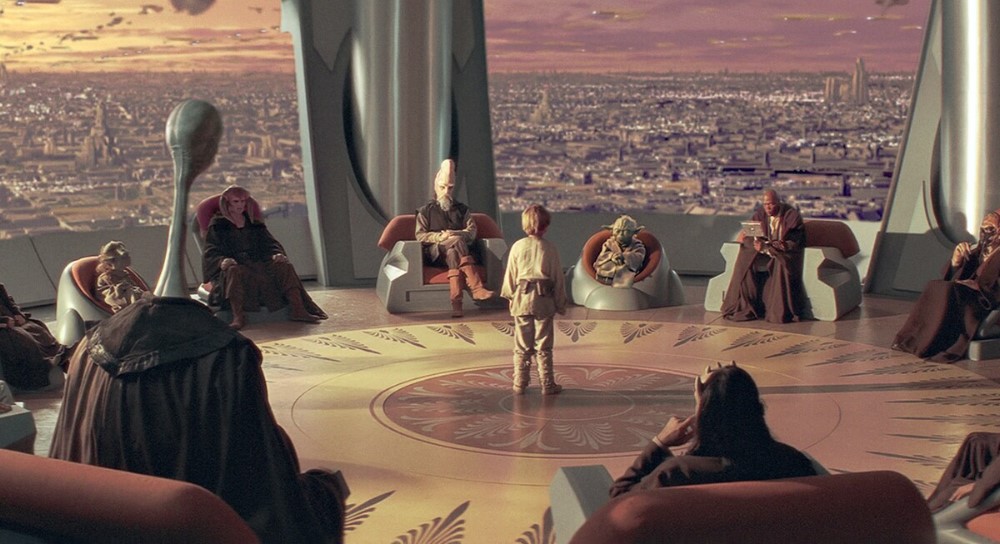At a time when digital effects were still a largely uncharted territory, when every shot was an undiscovered country and fast solutions were required to bring projects home, a rogue group of ILM visual effects artists banded together in what was known as the ‘Rebel Mac’ unit to solve these issues, and that team were integral in completing a number of shots in The Phantom Menace. Lucasfilm delve deeper into the history of a team that helped revolutionise VFX techniques.
Initially working from home, Knoll began to devise an “alternate pipeline” to use “simple tools for simple jobs,” as he explains. “There’s going to be lots of cases where we needed simple computer graphics and it couldn’t be that expensive.” Knoll made friends with developers of the over-the-counter software Electric Image, and after preparing the tool, decided he would try to create the entire warp drive shot himself. It was a success, and he created elements for an additional five or six shots. “I was really pleased with the workflow, and scaled it up on the next project, Mission Impossible [1996].” Following that show, he formally established a new department for Star Trek: First Contact (1996) using desktop tools to provide more computer graphics bandwidth both affordably and efficiently.
Inspired both by the Rebel Alliance in Star Wars and the fact of their distinction from the standard effects pipeline, the group was known as the “Rebel Unit,” or sometimes the “Rebel Mac Unit.” They worked primarily on Macintosh computers, as opposed to the usual high-powered Silicon Graphics machines of the day, and featured a small cadre of generalists, each assigned shots in their entirety and tasked with every step including modeling, animating, lighting, compositing, and rendering. After the group’s successful work on shows like First Contact and Men in Black (1997), the effort was scaled up for Star Wars: The Phantom Menace (1999) and later Star Wars: Attack of the Clones (2002).
Among the Rebel Unit crew was Billy Brooks, who remembers the experience as “pretty awesome because I was there with artists like Stuart Maschwitz, Jonathan Rothbart, Colie Wertz, Andrew Hardaway, Erich Ippen, and [department coordinator] Marianne Heath, just a great group of people. As a generalist you can do a lot of different things, instead of being a specialist which is also a good thing, but a lot of times a generalist can be a lot faster. If I’m modeling a house that I’m going to be using for a specific shot, I know I’m never going to see the back of it, so I’m not going to model the back because I’m the person doing the whole shot. If I’m a modeler, I would have to do it from every angle because I’m isolated and not sure how it’s going to be used later in a shot.”
- Hardcover Book
- Revis, Beth (Author)
- English (Publication Language)
- 48 Pages - 12/03/2024 (Publication Date) - Random House/Star Wars (Publisher)



